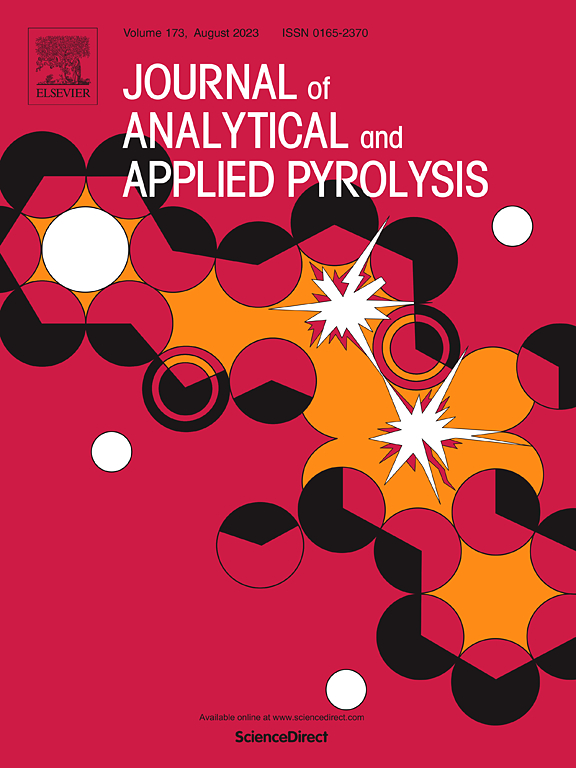Comparative study on properties of waste tyre pyrolysis oil and its distillates obtained by molecular distillation
IF 5.8
2区 化学
Q1 CHEMISTRY, ANALYTICAL
引用次数: 0
Abstract
Pyrolysis offers significant advantages for the resourceful recycling of waste tyre (WT), while molecular distillation can efficiently separate and non-destructively collect the resulting pyrolysis oil for high-value utilisation of different oil fractions. Herein, WT was pyrolysed at various temperatures (350 °C, 400 °C, 450 °C and 500 °C) to obtain the desired pyrolysis products. The optimal pyrolysis temperature of 400 °C was selected based on the analysis of WT pyrolysis at temperatures ranging from 350 °C to 500 °C. Subsequently, molecular distillation experiments were conducted on the waste tyre pyrolysis oil (WTPO) obtained at 400 °C. The distillation process was carried out at varying temperatures (100 °C, 115 °C, 130 °C, 145 °C and 160 °C) to separate the WTPO into light oil (LO) and heavy oil (HO), including LO130 °C (LO obtained at 130 °C) and HO130 °C (HO obtained at 130 °C). The characteristics of the pyrolysis products and WTPO fractions were investigated, with a focus on the effect of temperature on the yield and composition distribution of the pyrolysis products as well as the distribution pattern of WTPO fractions. The maximum pyrolysis oil output was obtained at 400 °C (58.23 wt%), with a high proportion of alkane (9.42 %) and aromatics (75.07 %). LO130 °C contained more olefins (16.55 %) and ketones (7.37 %) than HO130 °C, whereas HO130 °C had more alkanes (5.65 %) and aromatic hydrocarbons (61.99 %). The findings of this study suggest the effectiveness of using molecular distillation to separate WTPO fractions.
求助全文
约1分钟内获得全文
求助全文
来源期刊
CiteScore
9.10
自引率
11.70%
发文量
340
审稿时长
44 days
期刊介绍:
The Journal of Analytical and Applied Pyrolysis (JAAP) is devoted to the publication of papers dealing with innovative applications of pyrolysis processes, the characterization of products related to pyrolysis reactions, and investigations of reaction mechanism. To be considered by JAAP, a manuscript should present significant progress in these topics. The novelty must be satisfactorily argued in the cover letter. A manuscript with a cover letter to the editor not addressing the novelty is likely to be rejected without review.

 求助内容:
求助内容: 应助结果提醒方式:
应助结果提醒方式:


